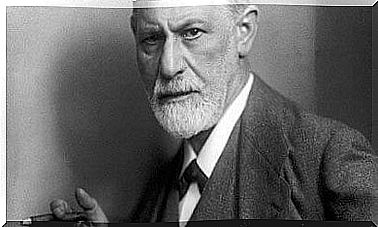Yerkes-Dodson’s Law: The Relationship Between Performance And Arousal

Yerkes-Dodson’s law suggests that performance and arousal are directly related. This law was developed by psychologists Robert M. Yerkes and John Dillingham Dodson in 1908.
Yerkes-Dodson’s law states that performance increases with physiological or mental arousal, but only to a limited extent. When arousal levels become too high, performance decreases. According to this law, the best way to increase motivation and performance is to work with objective tasks that allow us to be alert.
In their experiment, Yerkes and Dodson found that rats could be motivated to complete a maze with mild electrical shocks. However, when the shocks were of greater degree, the performance level diminished and they simply ran with the intention of escaping.
The experiment made it clear that arousal levels helped to focus attention on the task at hand, but only up to a certain ideal point.
How Yerkes-Dodson’s Law Works
An example of how the Yerkes-Dodson law works is the anxiety felt before a test. An optimal stress level can help you focus on the test and remember information. However, too much test anxiety can affect the ability to concentrate, which makes it harder to remember.
Another great example of how Yerkes-Dodson’s law works is sports performance. When an athlete is ready to make an important move, a certain ideal level of arousal – adrenaline release – can improve their performance and allow them to perform that move. However, when the athlete is very stressed, they may be blocked or move energetically, but not very accurately.
Then, the determining the optimal level of arousal? In fact, there is no exact answer to this question, as this level of arousal can vary from task to task.

For example, it is known that performance levels decrease from a lower activation level. This means that if you are doing a relatively simple task, you can handle a much wider range of activation levels.
Simple tasks such as photocopying or doing household chores are less likely to be affected by very low or very high activation levels. However, when performing much more complex tasks, performance would be much more influenced by low and high levels of activation.
If the arousal levels are too low, you may feel that there is a lack of energy to do the work. However, very high arousal levels can be equally problematic, resulting in difficulty concentrating long enough to complete the task.
Inverted U model
The process described by Yerkes and Dodson is usually graphically illustrated as a bell-shaped curve that increases and then decreases with higher levels of arousal. This is why the Yerkes-Dodson law is also known as the inverted-U model.
Due to differences in tasks, the shape of the curve can be very variable. For simple or well-learned tasks, the relationship is linear and performance improves as arousal increases.
However, for complex, unknown, or difficult tasks, the relationship between arousal and performance is reversed after a point, and performance decreases as arousal increases.
The rising part of the inverted U can be considered as the energizing effect of the excitation. The downside is caused by the negative effects of arousal (or stress) on cognitive processes such as attention, memory and problem solving.
According to the inverted-U model, maximum performance is achieved when people experience a moderate level of pressure. When they experience too much or too little pressure, their performance decreases, sometimes significantly.
- The left side of the graph shows the situation where people are unchallenged, see no reason to work hard on a task, and risk approaching their work carelessly and unmotivated.
- Half of the graph shows where you are working most efficiently, when you are motivated enough to work hard without being overwhelmed.
- The right side of the graph shows where you start to give in to pressure, get overwhelmed.
The Four Influencing Factors
The inverted U-curve model is different from one individual to another depending on the situation. In reality, there are four influencing factors that can affect this curve, which are skill level, personality, anxiety trait and task complexity.
An individual’s skill level also affects their performance on a particular task. A highly trained individual, who is confident in their ability, is more likely to handle situations where pressure is high well, as the person can trust their well-rehearsed responses.
An individual’s personality also affects how he or she handles pressure. Psychologists believe that extroverts handle pressure better than introverts. Introverts, on the other hand, do better in the absence of pressure.
As for the anxiety trait, a person’s self-confidence also affects the way he or she handles any situation. A person is more likely to maintain composure under pressure if self-confidence is high and he does not repeatedly question his own abilities.
Lastly, the difficulty level of the task is another factor that influences an individual’s performance. The difficulty of making a photocopy is not the same as having to write a report or an essay. In any case, the level of complexity of any task varies from one person to another.

final comments
Despite being more than a century old, the Yerkes-Dodson law is very useful today. In fact, research in this line continues to emerge, especially to apply it to professional and sporting performance.
Research carried out between 1950 and 1980 confirmed that there is a correlation between high levels of stress and improved motivation and focus, although they have not established an exact cause for the correlation.
As recently as 2007, researchers suggested that the correlation is related to the brain’s production of stress hormones that, when measured during memory performance tests, demonstrated a curve similar to that in the Yerkes-Dodson experiment.
Furthermore, research has shown a positive correlation with good memory performance, suggesting that these hormones may also be responsible for the Yerkes-Dodson effect.









